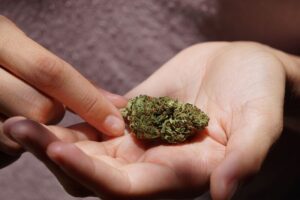
Introduction:
In the last few years, one of the most widely discussed topics of conversation has been about the use of medicinal cannabis and how it helps in treating chronic pain. One of the things that you should know is that medicinal cannabis has not been approved by the FDA for medication. Still, a licenced medical practitioner can prescribe it. Here in this guide, you will find the possible use of cannabis for the treatment of chronic pain. Across the United States, one of the most widespread health concerns that has been growing is chronic pain. As per the views of the CDC, this type of chronic pain affects nearly 1 in every 5 individuals. Plus, the estimated cost of disability and medical care is more than $500 billion.
Multi-faceted Approach-
To find out more about the medicinal uses of cannabis, visit cannabis trial UK. Besides that, chronic pain is a condition that is multifaceted and comprises physical, emotional, and mental stress on the body. So, the treatment of chronic pain needs a multifaceted approach. It comprises interventional, pharmacological, and non-pharmacological approaches. In the latest opioid epidemic, one that has gained popularity for the possible treatment of chronic pain is medicinal cannabis. Since most states are legalising the use of medicinal marijuana, it is also important for healthcare professionals to know the mechanism of indications, contradictions, actions, controversy, and role of medicinal marijuana (cannabis) in the treatment of chronic pain.
About Cannabis Components-
Another thing that you should know is that cannabis comprises a huge number of compounds, and the maximum of those is 60 pharmacologically dynamic cannabinoids. Plus, these act on the endogenous cannabinoid receptors or receivers in the body. At present, the main compounds that are found with the highest concentration are THC and CBD, also known as tetrahydrocannabinol and cannabidiol. With THC, one can get the psychoactive effects of cannabis or marijuana, which include psychosis and euphoria. Besides that, people should know that CBD is known to have anti-psychoactive and anti-anxiety properties, and it is not psychoactive.
Concentration of CBD-Self-
On the concentration of THC to CBD and the THC ratio, the therapeutic effects of cannabis are too dependent on the concentration of THC. If you are looking at recreational cannabis, then it tends to contain THC, which is high in concentration. But medicinal cannabis contains a high concentration of CBD, which in turn helps in limiting the psychoactive effects of the medicine or drug. THC can also be called a fractional agonist at both the CB1 & CB2 receptors; it hinders the release of 5-hydroxytryptamine and glutamate and changes the dopaminergic function, which affects the pain pathways.
Compassionate Use Act (1996)
CBD is a bad allosteric modulator of CB1 receptors and it also works on other receptors, such as vanilloid and serotonin. Over 5000 years ago, there was the use of medicinal marijuana. It was also used by early Chinese doctors to treat the pain that is associated with constipation, malaria, rheumatism, and childbirth. Medicinal cannabis was also widely used in the 19th & 20th centuries, as per the US Pharmacopoeia. Besides that, California was the first state to make the use of marijuana legal under the supervision of doctors in the year 1996.






